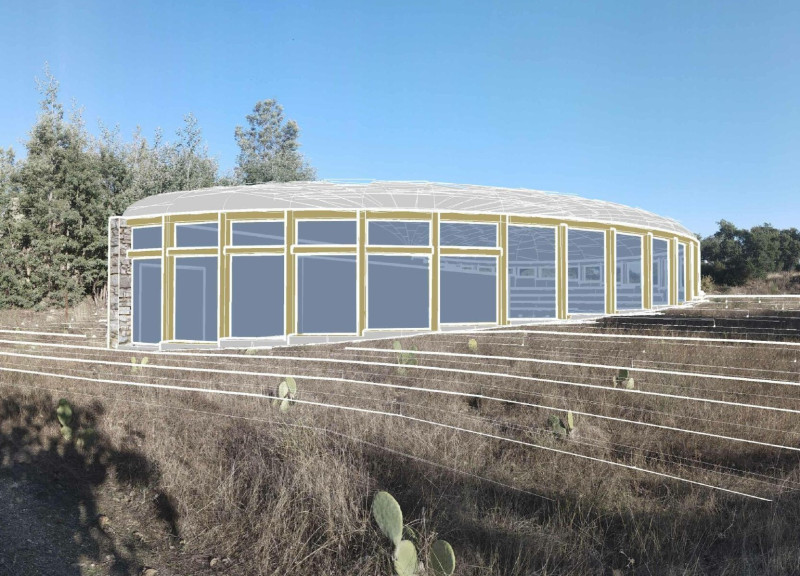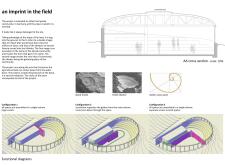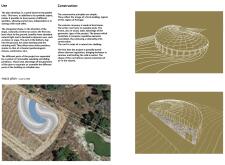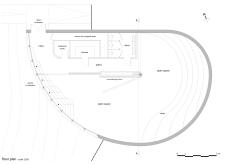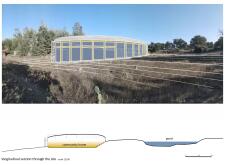5 key facts about this project
Integration with Natural Landscape
The project is notable for its consideration of the site's topography, utilizing slopes to establish a two-level configuration. The upper level is oriented to maximize natural light, serving as a flexible space for activities such as yoga and dance. In contrast, the lower level, partly embedded in the earth, houses performance spaces and communal gathering areas akin to historical theater settings. This dual configuration enables both privacy for smaller gatherings and openness for larger events, facilitating a dynamic community environment.
Materials and Construction Techniques
In terms of materiality, "An Imprint in the Field" utilizes locally sourced materials to enhance its environmental sustainability. The primary elements include local stone for the exterior, which grounds the structure within its geographical context, and wood posts that form the building’s framework, combining aesthetic appeal with structural efficiency. The roof is clad in natural zinc, providing weather resistance while harmonizing with the natural palette. The building’s design also incorporates thermal regulation strategies, leveraging its partial burial to maintain comfortable interior conditions, reflecting a commitment to environmental performance.
Design Flexibility and Spatial Organization
The architectural layout prioritizes flexibility and accessibility through a system of removable sliding partitions that allow various configurations based on community needs. The floor plan and sections ensure that separate activities can occur simultaneously without interference, enhancing the usability of the space. Key functions include a lobby area, technical facilities, and dedicated zones for arts and classes—ensuring that the building serves as a true hub for community engagement.
For those interested in exploring this project further, detailed architectural plans, sections, and additional information on design approaches are available to provide deeper insights into the unique features and functionality of "An Imprint in the Field."


